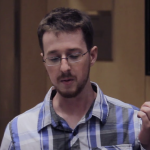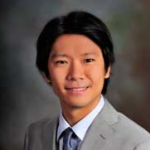| 2020-present | ||
|
Zach uses supercomputer simulations to explore virtual galaxies and their surroundings, with the goal of providing insight on how these massive structures form. He is an expert in understanding the way gas flows in and out of galaxies as part of the feedback cycle. He received his PhD from Northwestern University, where he worked with Claude-André Faucher-Giguère as a member of the FIRE project. When not working on research, Zach is passionate about outreach and has spent a lot of time teaching high school students. |
||
| 2015-2018 | ||
|
Much of Sheldon’s research is focused on identifying the nature of dark matter and in the proper interpretation of astrophysical data sets. He is a leading figure in the field of indirect detection, which relies on studying the decay or annihilation products of dark matter into standard model particles. Sheldon is also working on new and improved ways of interpreting skymaps via angular power spectra with finite count data, with important implications for understanding the sources of astrophysical neutrinos and gamma-rays, and for interpreting any data sets that rely on sparse counts for cosmological interpretation. |
||
|
2013-2015
|
||
|
Caitlin’s research as a McCue Fellow focused on observational studies of galaxy formation and evolution. Her work was influential in discovering and characterizing diverse types of starburst galaxies using infrared and submillimeter observatories. Caitlin’s research interests are motivated by the desire to learn how massive, extreme starbursts contribute to the buildup of stellar mass in the Universe; how much of their light is obscured by dust, and how that affects astronomer’s interpretations of the dominant role of galaxy evolution in the early Universe. Based on her important impact on the field, Caitlin was recruited to join the faculty at the University of Texas, Austin in Fall 2015.
|
||
| 2012-14 | ||
|
As a McCue Fellow, Shunsaku performed research on high-energy astrophysics and its interface with particle physics. He worked on high-energy signatures of supernova explosions and particle dark matter annihilation. He also explored the detectability of such signatures with astronomical observations. Shunsaku’s work as a McCue Fellow helped him secure a faculty position at Virginia Tech, where he started as an Assistant Professor in 2014.
|
||
| 2013-14 | ||
|
Sarah Miller
As a McCue Fellow, Sarah studied the dynamics and assembly of disk galaxies, using high-sensititivity spectroscopic observations of nearby and distant galaxies with the Keck Telescopes. Among other topics, her research elucidated the contributions of baryons and dark matter to the assembly history of spiral galaxies over the past 10 Gyr.
|
||
| 2010 – 2012 | ||
|
Annika’s main research interest as a McCue Fellow focused on figuring out what dark matter is, and the interplay between dark-matter detection and the evolution of cosmic structure. She worked on direct and indirect detection of WIMP dark matter, and cosmic structure simulations of non-WIMP dark matter. Annika’s work also explored galaxy evolution, galactic dynamics, and solar-system dynamics. Support from the McCue Fellowship at UC Irvine helped Annika earn a faculty appointment at the Ohio State University, where she started as an Assistant Professor in 2012.
|
||
|
2007
|
||
|
Alex studied the polarization of the Cosmic Microwave Background (CMB) with EPIC (Experimental Probe of Inflationary Cosmology), the anisotropy of the Far-Infrared Background with Herschel, and the reionization of the Universe from the 21cm spin-flip transition of hydrogen. He is currently a NASA Postdoctoral (NPP) Fellow at the NASA Ames Research Center.
|
||
|
Jose Cembranos Jose’s research was in particle physics, cosmology and their multiple relations. As a McCue Fellow at UC Irvine, Jose explored physics beyond the Standard Model, such as supersymmetry and extra dimensions. Jose is currently a Ramón y Cajal Fellow in the Department of Theoretical Physics at the Universidad Complutense de Madrid. |
||
|
Marc Seigar’s primary research interest as a McCue Fellow focused on the structure, morphology and kinematics of disk galaxies. Spiral structure dark matter halo structure were his main interests at Irvine. He earned a an Assistant Professor offer from the University of Arkansas at Little Rock in 2007. He was later recruited away to be Head of the Department of Physics at the University of Minnesota Duluth, an appointment he started in 2013. |
||
|
2006 – 2009
|
||
|
As a McCue Fellow, Jeff’s research centered on observational studies of galaxy formation and evolution. He conducted large surveys to measure the spatial distribution and mass of high redshift (z > 2) galaxies and quasar absorption line systems. He further studied the merger rate of galaxies over cosmic time and methods of detecting high redshift supernovae. Jeff is currently a Research Fellow at Swinburne University.
|
||
|
2006
|
||
|
Naoki Seto
Naoki is mainly working on cosmological and astrophysical aspects of gravitational waves. He is interested in broad frequency bands, including pulsar timing observation (~1 nHz), the Laser Interferometer Space Antenna (LISA: ~1 mHz), and the Laser Interferometer Gravitational-Wave Observatory (LIGO: ~100 Hz). Naoki is currently an Assistant Professor in the Department of Physics & Astronomy at Kyoto University.
|
||
|
Louie’s research interests are in theoretical astroparticle physics and cosmology, in particular neutrinos and dark matter. His recent work has included using dwarf galaxies to constrain the nature of dark matter, and testing dark matter models with high energy gamma rays. In 2009, Louis accepted a Hubble Fellowship at the Kavli Center for Particle Astrophysics and Comsology (KIPAC) at Stanford University. He is currently an Assistant Professor at Texas A&M University.
|
||



